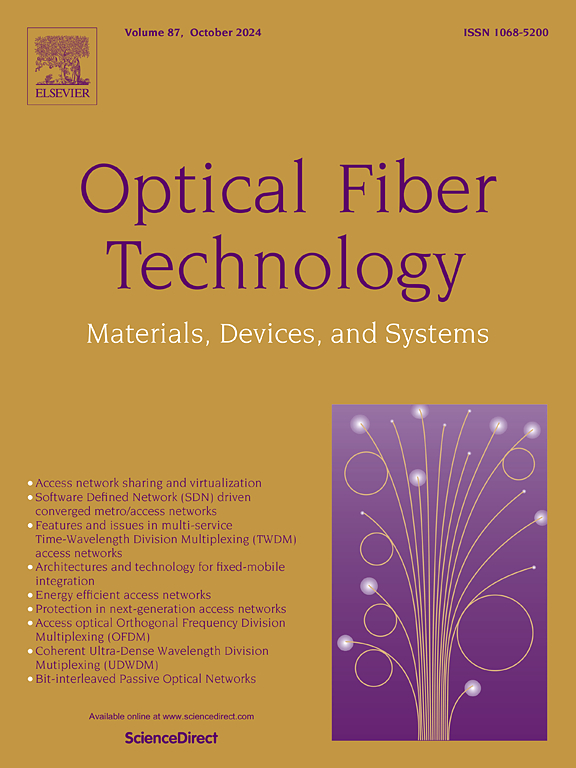A temperature self-compensating fiber-optic magnetic field sensor based on Mach-Zehnder interferometer and Vernier effect
IF 2.6
3区 计算机科学
Q2 ENGINEERING, ELECTRICAL & ELECTRONIC
引用次数: 0
Abstract
A temperature self-compensating fiber-optic magnetic field sensor based on Mach-Zehnder interferometer (MZI) and Vernier effect was proposed. The sensor consisted of MZIs connected in parallel. The hollow-core fiber (HCF) cladding of two MZIs was etched by hydrofluoric acid, and wrapped with magnetic fluid (MF) and polydimethylsiloxane (PDMS), respectively. The magnetic field sensitivity of MZI1 was improved by etching the HCF cladding. The maximum detection sensitivity of MZI1 was −161.1 pm/mT, and the temperature cross-sensitivity was 0.647 mT/°C. MZI2 was designed to be insensitive to magnetic fields, while its temperature sensitivity was similar to that of MZI1. By adjusting the parameters of two MZIs, the sensor could produce a Vernier effect with changes in magnetic field, increasing the sensitivity of magnetic field detection. Since the temperature response of two MZIs was similar, the sensors could produce a reduced Vernier effect with temperature changes, eliminating temperature crosstalk, and achieving temperature self-compensation. The experimental results demonstrated that the magnetic field sensitivity of the sensor was −654.7 pm/mT, which was 4.1 times higher than that of MZI1. The temperature crosstalk sensitivity was only 0.029 mT/°C, which was 22.3 times lower than that of MZI1. The proposed sensor enhanced the utilization efficiency of the Vernier effect through the special design of MZI2, which provided a new strategy for the Vernier effect in the fiber-optic magnetic field measurement domain.

求助全文
约1分钟内获得全文
求助全文
来源期刊

Optical Fiber Technology
工程技术-电信学
CiteScore
4.80
自引率
11.10%
发文量
327
审稿时长
63 days
期刊介绍:
Innovations in optical fiber technology are revolutionizing world communications. Newly developed fiber amplifiers allow for direct transmission of high-speed signals over transcontinental distances without the need for electronic regeneration. Optical fibers find new applications in data processing. The impact of fiber materials, devices, and systems on communications in the coming decades will create an abundance of primary literature and the need for up-to-date reviews.
Optical Fiber Technology: Materials, Devices, and Systems is a new cutting-edge journal designed to fill a need in this rapidly evolving field for speedy publication of regular length papers. Both theoretical and experimental papers on fiber materials, devices, and system performance evaluation and measurements are eligible, with emphasis on practical applications.
 求助内容:
求助内容: 应助结果提醒方式:
应助结果提醒方式:


